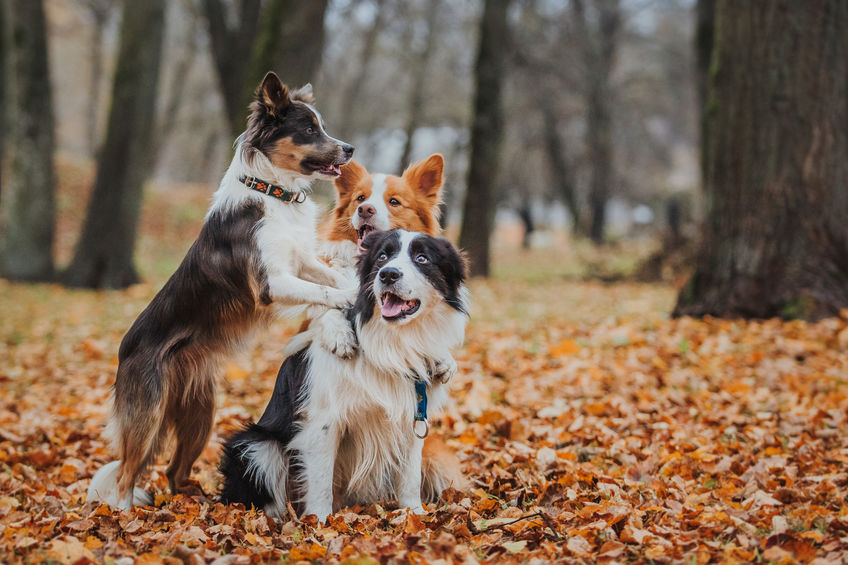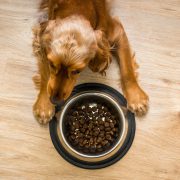Assisting Decision-Making on Age of Neutering for 35 Breeds of Dogs: Associated Joint Disorders, Cancers, and Urinary Incontinence
Assisting decision-making on age of neutering for 35 breeds of dogs: Associated joint disorders, cancers, and urinary incontinence

Open access
In our edition of: Oct 2020
In our categories of: small animals
our summary:
Hart, B.L. et al (2020) Assisting Decision-Making on Age of Neutering for 35 Breeds of Dogs: Associated Joint Disorders, Cancers, and Urinary Incontinence Frontiers in Veterinary Science, 7, p.388.
The aim of this retrospective study was to analyse in a variety of dog breeds, the increased risk of specific joint disorders and cancers associated with neutering at various ages. The study followed earlier studies that considered the same questions in Labradors, Golden Retrievers, and German Shepherd Dogs.
The study used hospital records, covering a 15-year period, from the Veterinary Medical Teaching hospital at the University of California-Davis. The 35 breeds selected were those most frequently occurring in the database and those chosen to include a sample of both giant and small breeds. The study considered the occurrence in both sexes of the following joint disorders: hip dysplasia (HD), cranial cruciate ligament tear or rupture (CCL), and elbow dysplasia (ED), and the following cancers: lymphoma (LSA), mast cell tumour (MCT), hemangiosarcoma (HAS), and osteosarcoma (OSA). In addition, mammary cancer (MC), pyometra (PYO), and urinary incontinence (UI) were examined in female dogs, and intervertebral disc disorders (IDD) were examined in Corgis and Dachshunds.
The age at neutering periods considered were < six months, 6-11 months, one year, 2-8 years or left intact. Data collected included date of birth, age at neutering, and age of diagnosis or onset of clinical signs for diseases of interest.
Overall results showed that for most of the included breeds, there was no increased vulnerability to either joint diseases or cancers by age of neutering. Vulnerability to joint diseases associated with neutering was generally related to body size. In two small breeds (Boston Terrier and Shih Tzu) there was a significant increase in cancers – for male Boston Terriers and female Shih Tzus. For each breed, a guideline age of neutering is provided based on the results from the study. The complete data set, including statistical analyses for each breed is available in the supplementary material.
Limitations of the study included the small number of included dogs in some of the breed data and the lack of information on why the owners chose to have the dog neutered.
References for the earlier and parallel studies
Hart, B.L. et al. (2014) Long-term health effects of neutering dogs: comparison of labrador retrievers with golden retrievers. PLoS ONE, 9:e102241 https://doi.org/10.1371/journal.pone.0102241
Hart, B.L. et al. (2016) Neutering of German Shepherd dogs: associated joint disorders, cancers and urinary incontinence. Veterinary Medicine and Science 2 (3) pp 191–199. https://doi.org/10.1002/vms3.34
Hart, B.L. et al. (2020) Assisting decision-making on age of neutering for mixed breed dogs of five weight categories: associated joint disorders and cancers. Frontiers in veterinary science, 7, p.472. https://doi.org/10.3389/fvets.2020.00472
Torres de la Riva, G. et al. (2013) Neutering dogs: effects on joint disorders and cancers in golden retrievers. PLoS ONE, 8:e55937 https://doi.org/10.1371/journal.pone.0055937
This study provides information that will help veterinary surgeons and animal owners, or caregivers decide the best age for neutering to avoid increasing the risk of joint disorders and cancers. The breed-specific results are of interest, but care should be taken when interpreting them due to the small numbers of dogs and the lack of discussion of other factors that need to be considered when making the decision about the age of neutering.
Image copyright attribute: annaav
Join the discussion
We encourage discussion on all material highlighted in each edition of inFOCUS. Use the button below to join the conversation on Twitter and include your comment in the feed for this issue.





These results definitely need to be read with caution.
“Overall results showed that for most of the included breeds, there was no increased vulnerability to either joint diseases or cancers by age of neutering.”
This statement is problematic for two reasons. The research isn’t looking for no increase in vulnerability. Not finding a difference doesn’t mean they found it wasn’t there. The study power is very low with small numbers of dogs in each group having the studied outcomes. Beagles are a good example where a 7-fold increase in risk of joint disease was observed, but with massive confidence intervals (not reported) that made the p-value (also not reported) above their 5% false positive threshold (which is neither explained nor justified as a threshold given multiple comparisons are being made).
“Vulnerability to joint diseases associated with neutering was generally related to body size. In two small breeds (Boston Terrier and Shih Tzu) there was a significant increase in cancers”
Was there? It’s hard to tell. The study combined two age groups in order to demonstrate this increase without really explaining why. They do an awful lot of comparisons. Something was likely to pop up simply due to chance.
To my mind this research was exploratory only and should not be used by clinicians in decision making. Confidence intervals are not reported, neither are actual p-values. The study power is very low, and a huge number of comparisons are being made (each disease, each age group, and multiple combinations) with a 5% false positive rate being accepted for each comparison made without adjusting for multiple comparisons.